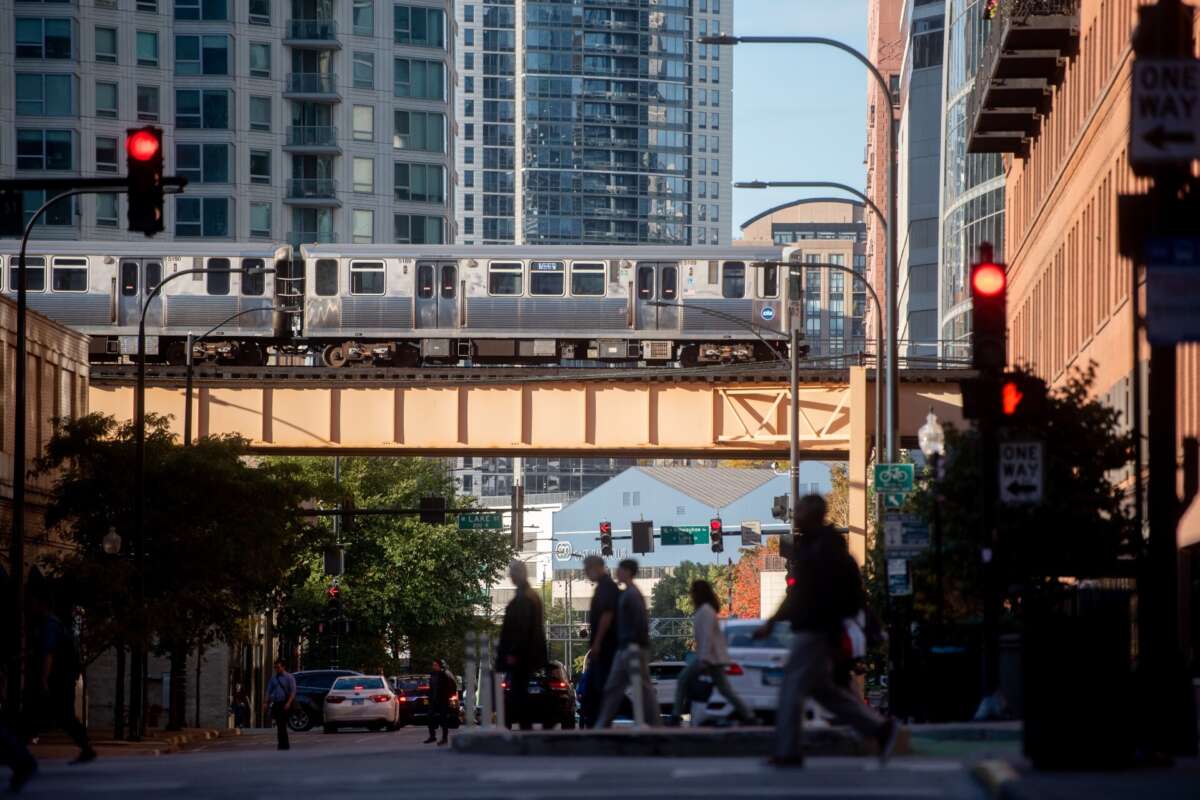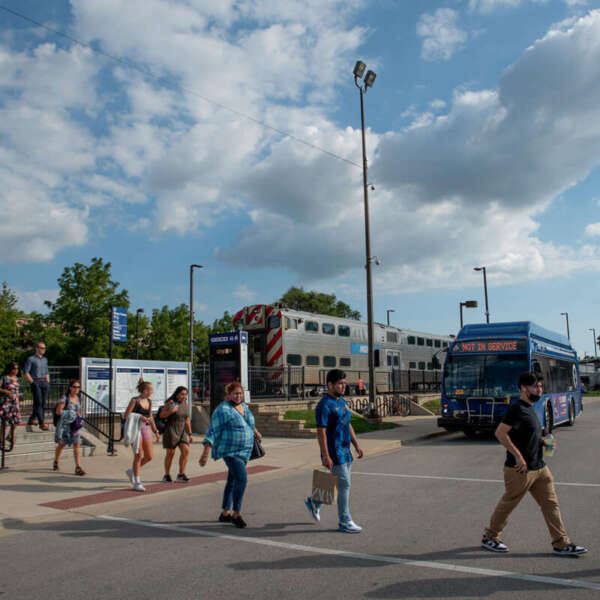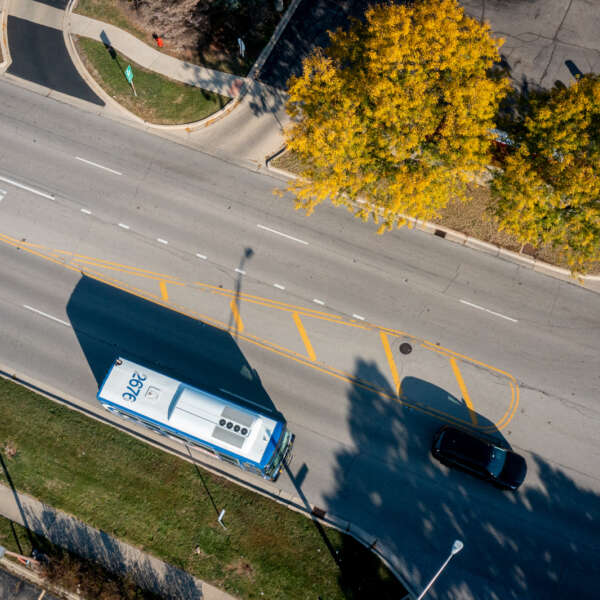How the RTA is prioritizing inclusive community engagement and transparency
June 15, 2023
June 15, 2023

This post is one in a series exploring the Agenda for Action and Advocacy in Transit is the Answer, the RTA’s new regional transit strategic plan. Together with our partners, working toward the items on this list will move us closer to the plan’s vision of a public transportation system that is safe, reliable, and accessible that connects people to opportunity, advances equity, and combats climate change.
As the planning, budgetary, and oversight authority for the Chicago region’s transit providers, the RTA collects and compiles extensive data on the transit system, including ridership trends, capital and operating budget figures, and funding and revenue metrics. RTA staff strive to make this information readily available and easy to understand so that communities can engage with how spending decisions are made.
Transit is the Answer cements this commitment in the Advocacy and Action Agenda, calling for further transparency and increased engagement with riders and other regional stakeholders. Recently, the RTA has made several improvements to data transparency and opportunities for public involvement in decision-making processes.
The Regional Transportation Authority Mapping and Statistics website, or RTAMS, has gone through several rounds of updates to improve the user experience and reorganize information to make vast amounts of publicly available data more useful. This includes the Mapping and GIS Portal containing refreshed dashboards on the State of Transit, Finance, and Capital Projects, which allow users to track and interact with the data in easy to read displays. The portal also houses Community Planning project StoryMaps, which provide visuals and background information in easily digestible and shareable formats. The Jurisdictions section of RTAMS allows users to search for transit and planning information by various jurisdictions, including by city, county, ward, or legislative district. In the past, all capital projects were lumped into one category; they are now separated out between area-specific projects, like station improvements, and systemwide projects, like battery powered locomotives that will run through multiple jurisdictions. A wealth of data exists on RTAMS, and the RTA is continuously working to improve its accessibility.
While the pandemic necessitated virtual meetings, the RTA and Service Boards recognize the value of virtual options for greater public participation outside of public health safety precautions. While regular meetings have largely returned to in-person, the RTA and Service Boards have continued to offer live broadcasts and virtual participation for those who cannot or prefer not to attend meetings in person, giving people greater flexibility to participate in meetings from home or view them on their own time. Archived meetings are available on the RTA’s website and on YouTube.
The development of Transit is the Answer increased engagement with regional stakeholders where the RTA was able to apply approaches that were initiated in the agency’s community planning work. Working group participants were offered stipends to ensure they were compensated for their time and expertise and encourage diverse public participation. The end result has showcased the value of two-way, clear and transparent communication in decision-making. Stakeholder working groups identified strategies to improve on these fronts, including articulating needed and desired information on transit investments in easily understood and accessible formats, evaluating outreach efforts for potential improvements, and developing community advisory groups to provide ongoing feedback and build a more robust structure for community input in transit planning.
Moving forward, the RTA is preparing to expand the role of our Citizen Advisory Board (RTACAB) to strengthen the rider voice in transit planning and decision-making. The enhanced RTACAB will track agency and partner progress toward the goals and actions of the strategic plan. Changes that we are considering include adding new members and focusing agendas on topics where citizen and rider input is most needed.
Transit is the answer to many of the region’s challenges, but without community engagement and coalition building, the work of the RTA and the Service Boards can only go so far. Recognizing this, we invite you to get involved with the RTA’s work in addressing current challenges and implementing the goals of Transit is the Answer. Join our Coalition to stay updated on the plan’s progress and share your feedback as it is implemented.
Subscribe to our Newsletter
Related Articles
 Transit station activation in Uptown brings positive presence to Broadway bus route with weekly outdoor yoga class
Transit station activation in Uptown brings positive presence to Broadway bus route with weekly outdoor yoga class
On Friday mornings now through the end of the year, CTA #36 and #81 bus riders and Red Line passengers through the Uptown neighborhood of Chicago may catch a...
July 25, 2024 Join the RTA Transit is the Answer Coalition to discuss possible reforms to improve service and accountability for riders
Join the RTA Transit is the Answer Coalition to discuss possible reforms to improve service and accountability for riders
Following the introduction of legislation that proposes changes to how the Chicago region’s transit agencies are organized, the RTA continues to lead convers...
July 15, 2024 RTA releases new fare equity report, recommending fully funding and expanding reduced fare programs
RTA releases new fare equity report, recommending fully funding and expanding reduced fare programs
A new report released by the RTA in July, Building a More Equitable Fare Structure for Public Transit in the Chicago Region, recommends that the state legisl...
July 11, 2024 Homewood, Richton Park adopt transit-oriented development plans funded through RTA Community Planning program
Homewood, Richton Park adopt transit-oriented development plans funded through RTA Community Planning program
This spring, transit-oriented development (TOD) plans were adopted by the villages of Homewood and Richton Park that will make these communities more transit...
July 11, 2024 Good news: Regional transit ridership reaches new high as CTA, Metra, and Pace increase service, offer new fare products
Good news: Regional transit ridership reaches new high as CTA, Metra, and Pace increase service, offer new fare products
Ridership across Chicago’s transit system has continued to increase, with May 2024 seeing the highest ridership levels since 2019 for CTA, Metra, and Pace. T...
June 28, 2024 Legislative Update: Lawmakers pass state budget, action on transit funding still needed ahead of fiscal cliff
Legislative Update: Lawmakers pass state budget, action on transit funding still needed ahead of fiscal cliff
The Illinois General Assembly adjourned this year’s spring legislative session after passing an overall $53.1 billion budget for State Fiscal Year (SFY) 2025...
June 27, 2024